Since the end of the 18th century, a law had provided that the ruler's successor must be crowned within six months of the ruler's death. This was necessary, among other things, because the state budget became final only after the consecration of the king. No delay was allowed in the war conditions, so the Parliament decided on the earliest possible date. Thus, just over a month was available to organise the ceremonial inauguration.
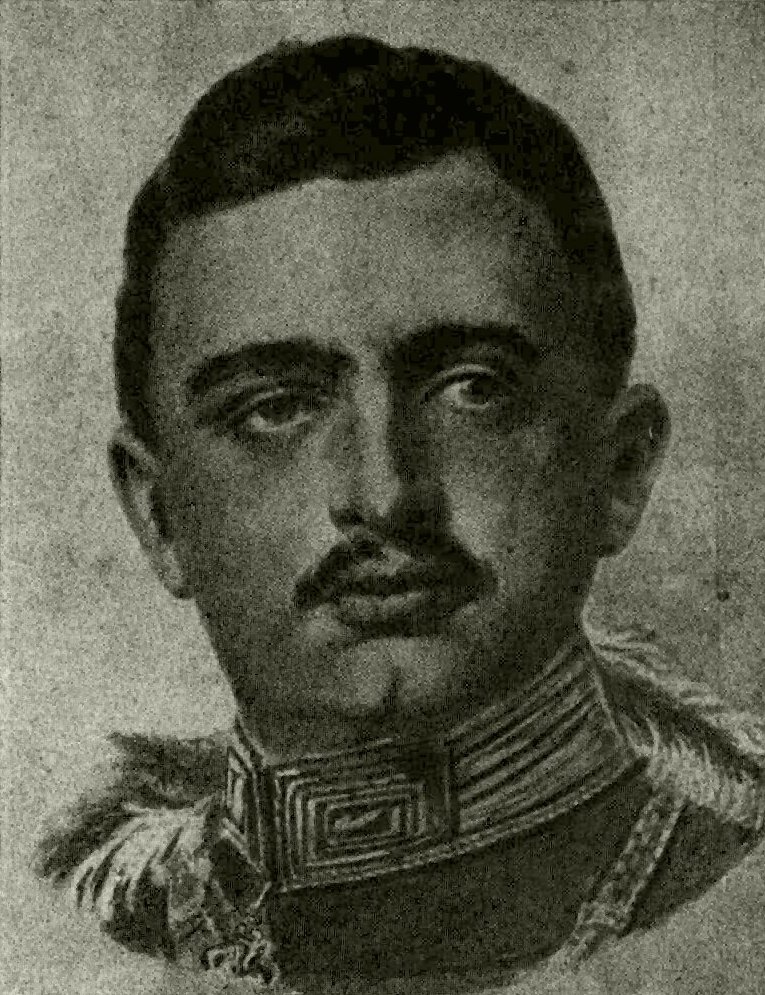
Charles IV of Hungary (Source: Digital Archive of Pictures, No.: DKA-020535)
To organise the event, the Coronation Ceremony Organising Committee was set up, which decided to hold the entire ceremony in Buda Castle. The Church of the Assumption was designated as the venue for the ecclesiastical ceremony, and secular events were held in Szentháromság Square and Szent György Square. As Ferenc Maczó pointed out in his study (Coronation of King Charles IV and Queen Zita. Rubicon, Issue 1-2 of 2017), this actually meant a simplified procedure, which was justified not only by the war and the lack of material, but also by the winter weather. However, the country was facing a significant event, so a special subcommittee was set up under the leadership of Count Miklós Bánffy, a politician-writer-artist, to decorate the participating venues. Preparations and behind-the-scenes work took place in the impromptu design office furnished in the shop premises of Dísz Square from the beginning of December.
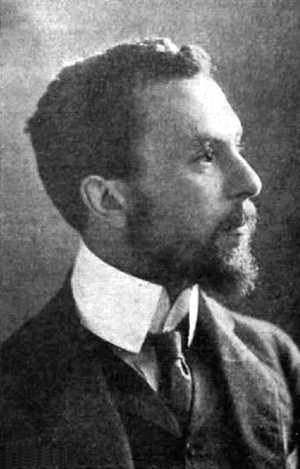
Charles IV of Hungary (Source: Digital Archive of Pictures, No.: DKA-020535)
To organise the event, the Coronation Ceremony Organising Committee was set up, which decided to hold the entire ceremony in Buda Castle. The Church of the Assumption was designated as the venue for the ecclesiastical ceremony, and secular events were held in Szentháromság Square and Szent György Square. As Ferenc Maczó pointed out in his study (Coronation of King Charles IV and Queen Zita. Rubicon, Issue 1-2 of 2017), this actually meant a simplified procedure, which was justified not only by the war and the lack of material, but also by the winter weather. However, the country was facing a significant event, so a special subcommittee was set up under the leadership of Count Miklós Bánffy, a politician-writer-artist, to decorate the participating venues. Preparations and behind-the-scenes work took place in the impromptu design office furnished in the shop premises of Dísz Square from the beginning of December.
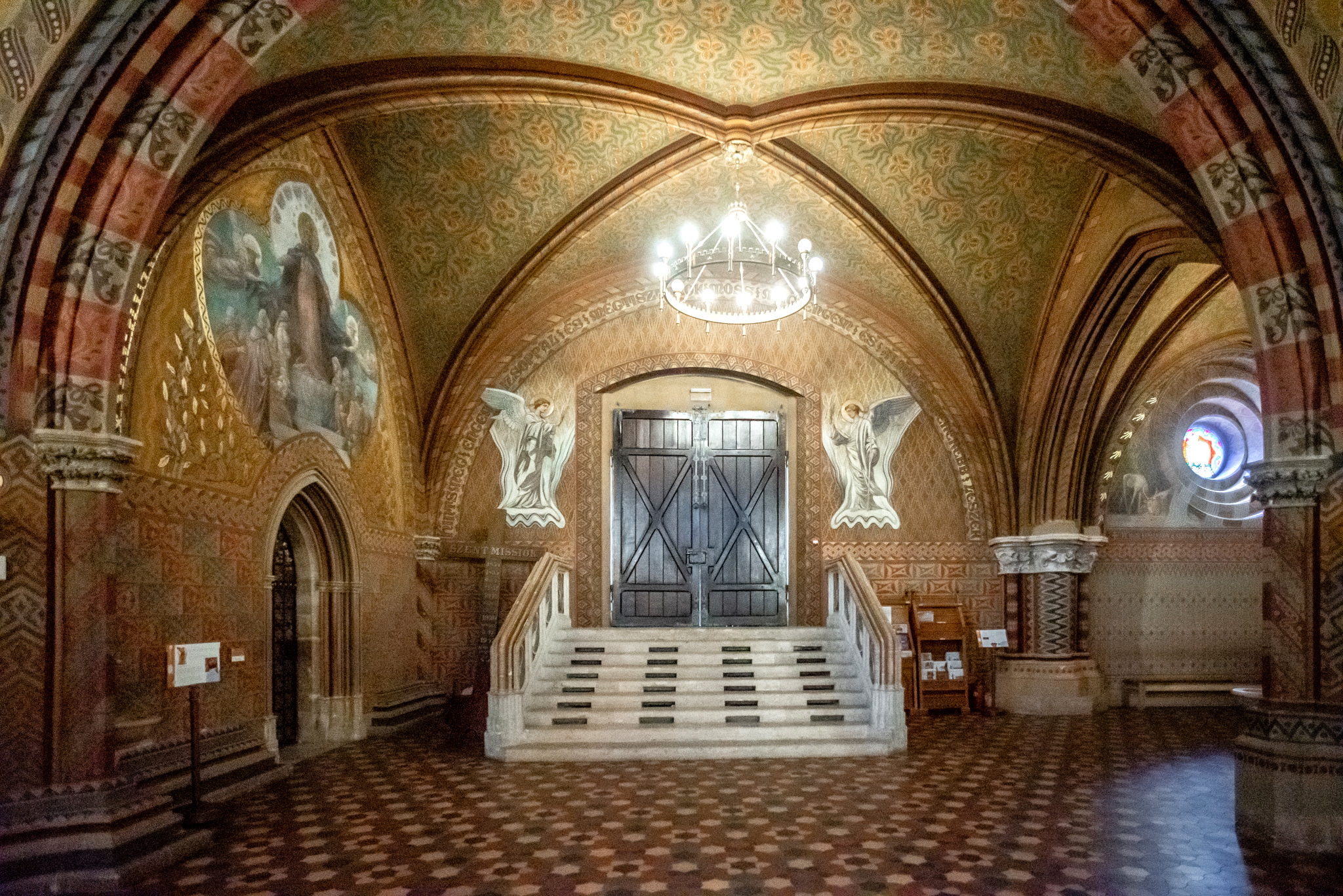
Charles IV of Hungary (Source: Digital Archive of Pictures, No.: DKA-020535)
To organise the event, the Coronation Ceremony Organising Committee was set up, which decided to hold the entire ceremony in Buda Castle. The Church of the Assumption was designated as the venue for the ecclesiastical ceremony, and secular events were held in Szentháromság Square and Szent György Square. As Ferenc Maczó pointed out in his study (Coronation of King Charles IV and Queen Zita. Rubicon, Issue 1-2 of 2017), this actually meant a simplified procedure, which was justified not only by the war and the lack of material, but also by the winter weather. However, the country was facing a significant event, so a special subcommittee was set up under the leadership of Count Miklós Bánffy, a politician-writer-artist, to decorate the participating venues. Preparations and behind-the-scenes work took place in the impromptu design office furnished in the shop premises of Dísz Square from the beginning of December.
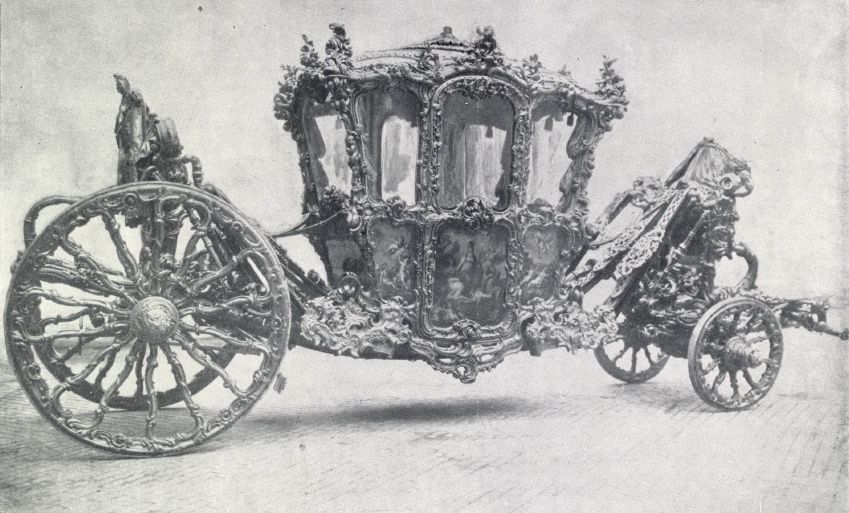
The Coronation Carriage (Source: Magyar Iparművészet, Issue 1-3, 1917)
The overcrowding was optically counterbalanced by dressing the pillars in the same carmine material that was the base colour of the set, making the entire interior a single room effect. At their headings, however, they decorated the drapery and painted the coats of arms of the Hungarian dynasties. The strong carmine colour was justified not only by its monarchical meaning but also by the fact that it was the only way to suppress the vivid painting of the church walls. Mátyás Gödölle's study (Fine Artists in the Front Line, Rubicon Issue 1-2, 2017) shows that artists took part not only in the design of the sets, but also in the recording of the events: József Rippl-Rónai, Károly Kernstok, Bertalan Pór and Gyula Rudnay, among others, also made paintings and drawings about the coronation.

The remodelled interior of the Matthias Church (Source: Museum of the Church of the Assumption in Buda)
In order to have adequate lighting, new luminaries had to be installed, which, due to lack of time and materials, were eventually hung only with simple iron rings suspended from the ceiling, on which the downward-facing light bulbs were mounted. The rings themselves were not even visible from the brightness, so according to the touched recollections, this coercive solution was reminiscent of the halo of the saints and became the best component of the set. The parish asked that the light fixtures remain in place after the coronation.

The downward-facing luminaries can also be seen in the painting by József Rippl-Rónai (Source: Hungarian National Gallery)
In accordance with the coronation process, three canopies — tent-like drapery — were hung in the church: the first was elongated, and below it were the heirs waiting to be crowned. The most interesting was the second, which was above the main altar, as it was reminiscent of a Kun tent. With this, Jenő Lechner referred to the eastern origins of the Hungarians, because, like his uncle, Ödön, he was also preoccupied with the national architectural form, which he wanted to create from our eastern roots. There had been much criticism for using a pagan design in a Christian church, during such an important event.
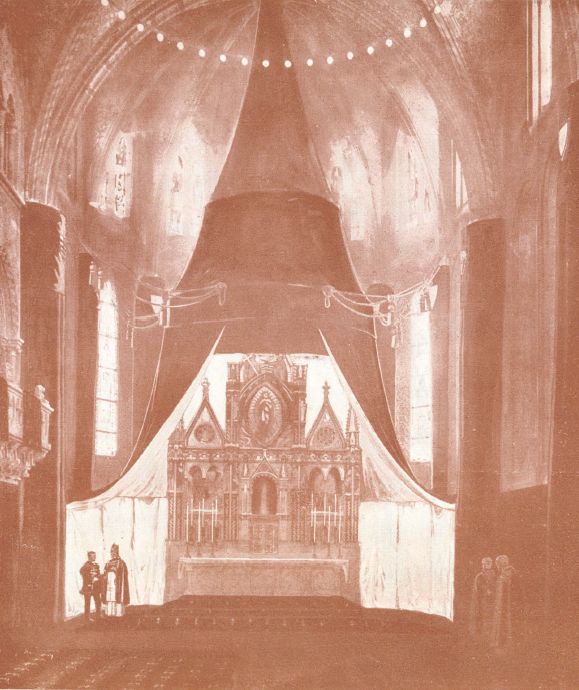
The tent hung above the main altar (Source: Magyar Iparművészet, Issue 1-3, 1917)
Charles took the first oath here in which he undertook to protect the church and the poor, then the archbishop anointed him with consecrated oil and armed him with a sword. Finally, Archbishop János Csernoch of Esztergom and Prime Minister István Tisza put the Holy Crown on his head together. The royal couple then marched under a semicircular canopy attached to the north wall of the sanctuary and took a seat on the throne.
The coronation in Felix Schwormstädt's painting (Source: Illustrierte Zeitung, Leipzig)
After the ecclesiastical ceremony, the four steps of the secular phase followed. First, the Knights of the Golden Spur were inaugurated by the king - a part of the coronation tradition since the early 14th century. Usually, the award was given to high-ranking officers, but Charles gave it to the soldiers fighting most heroically on the front, handing out about fifty spurs at a time. His appreciation for the Hungarians was expressed by the fact that at the time of the ceremony, the Hungarian Hymn was playing, not the imperial Gott erhalte, which had accompanied the coronations for centuries.
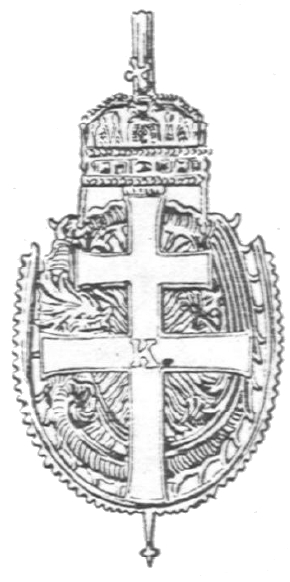
Badge of the Knights of the Golden Spur (Source: Uniformen-Markt Journal, Booklet 3, 1943)
After that, the royal couple walked out of the church to the Szentháromság Square on a national coloured carpet, for the decoration of which, including the surrounding streets, architect Dénes Györgyi was responsible. A row of long, narrow flags were placed in the gable windows of the church and hung all the way to the entrance. They did the same at the building of the neighbouring Ministry of Finance. The simple houses were also decorated, albeit relatively modestly: green garlands woven with golden threads were placed between the windows on the upstairs levels. The taller buildings were adorned with garlands of the same colour composition.
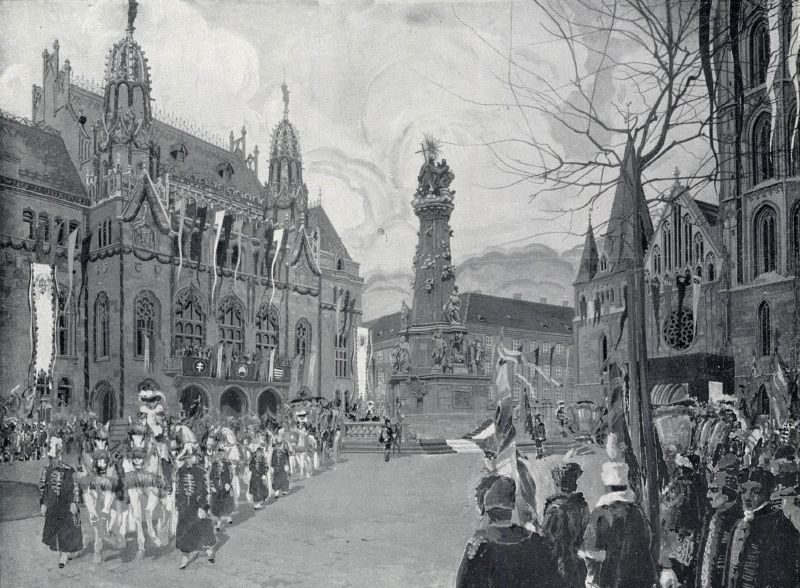
Szentháromság Square was also decorated during the coronation (Source: Magyar Iparművészet, Issue 1-3, 1917)
The ground floors were covered with gobelin imitation, despite the fact that it was conceivable that the large crowd gathered would cover them. However, the statues standing on top of the narrow pillars decorated with coats of arms were very visible: white cavalry soldiers and statues holding the Holy Crown, among others, stood out from the crowd. These were designed by Miklós Bánffy himself and set up in pairs to provide an escort for the coronation carriage on either side of the streets of the castle.
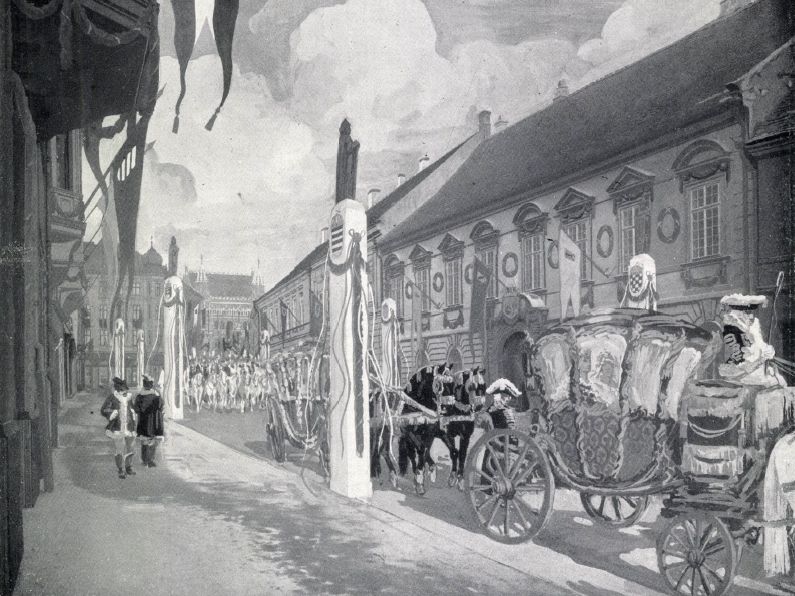
Szentháromság Square was also decorated during the coronation (Source: Magyar Iparművészet, Issue 1-3, 1917)
The ground floors were covered with gobelin imitation, despite the fact that it was conceivable that the large crowd gathered would cover them. However, the statues standing on top of the narrow pillars decorated with coats of arms were very visible: white cavalry soldiers and statues holding the Holy Crown, among others, stood out from the crowd. These were designed by Miklós Bánffy himself and set up in pairs to provide an escort for the coronation carriage on either side of the streets of the castle.

The king took the secular oath on the platform built on the Holy Trinity Statue (Source: Vasárnapi Ujság, 7 January 1917)
The third step of the secular coronation took place in Szent György Square next to the Royal Palace, where a coronation hill was erected according to the plans of Károly Kós. Lots of soil from symbolic places sent by the counties were piled up here, the sides of which were planted with grass and flower beds, and coloured with straw wreaths. On top of it were ramps gently rising from the four equator, and the king, trotted up with his horse, cut toward the four equator with his sword, symbolising that he was defending his country from an enemy coming from anywhere.
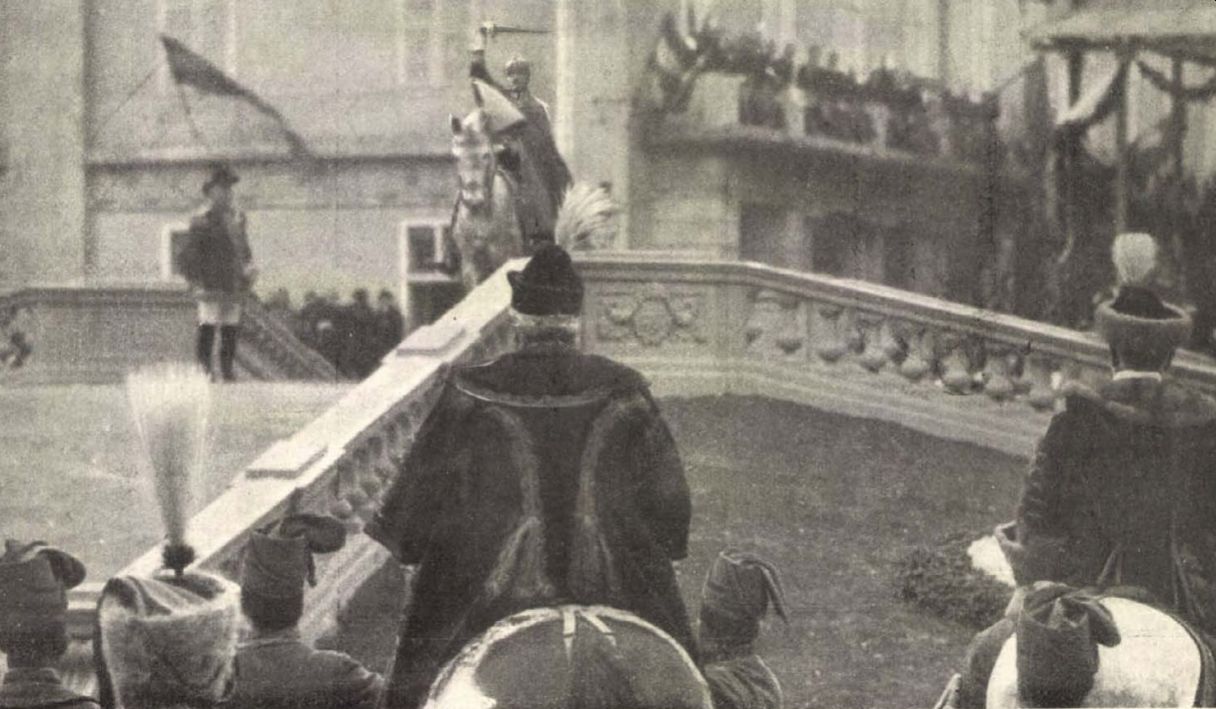
The moment of sword cut (Source: Vasárnapi Ujság, 7 January 1917)
The quality of the scenery was criticised by many, but at the same time it was taken into account that artists and craftsmen had to work in a hurry, managing on a modest budget. Béla Rerrich summed up the results in his writings published in the first days of 1917:
“However, the moving life with the details of the act of coronation, the richness and lavishness of colour, the uplifting consciousness of the above-mentioned act made the whole picture so harmoniously beautiful and unified that the day of coronation remained unforgettable for all who could see it, and this beautiful unforgettable image was framed by these artists.”
The secular phase of the coronation ceremony ended with a gala lunch served at the Royal Palace. However, this was only symbolic, as the prepared food was distributed among the patients in the hospitals at the request of the king.
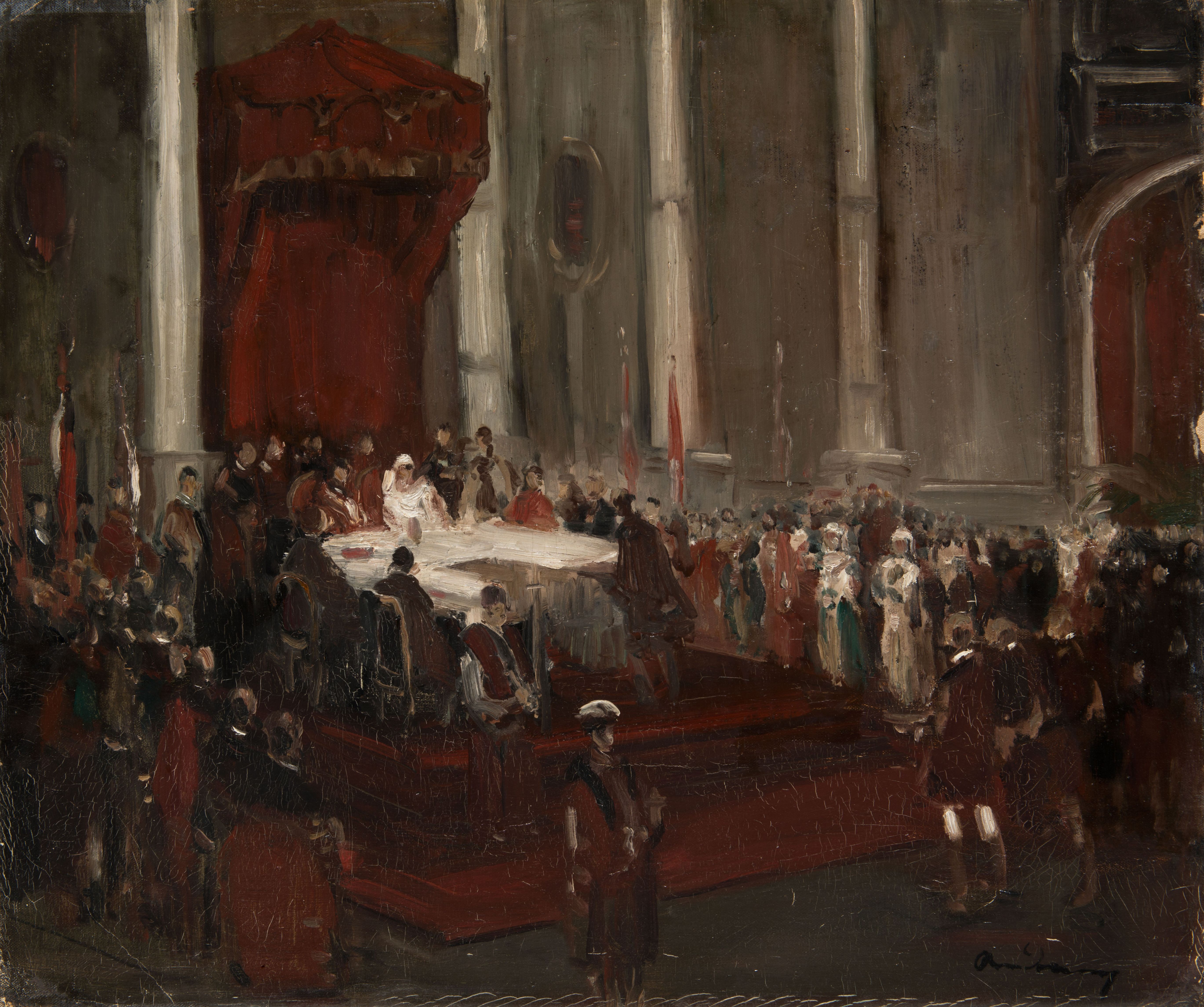
Gyula Rudnay: Outline of the Coronation Lunch (Source: Hungarian National Gallery)
The king, famous for his deep faith and goodness, did not even spend two years on the throne, accepting the state form of the Republic of Hungary in his declaration of 13 November 1918 in Eckartsau. Nevertheless, he tried twice to return to the throne, unsuccessfully. Moreover, he was captured for the second time and transported to the island of Madeira, where he died on 1 April 1922, at the age of thirty-five, in Spanish flu. In 2004, he was beatified by Pope John Paul II.
Cover photo: Charles IV and Queen Zita (Source: Vasárnapi Ujság, 28 January 1917)

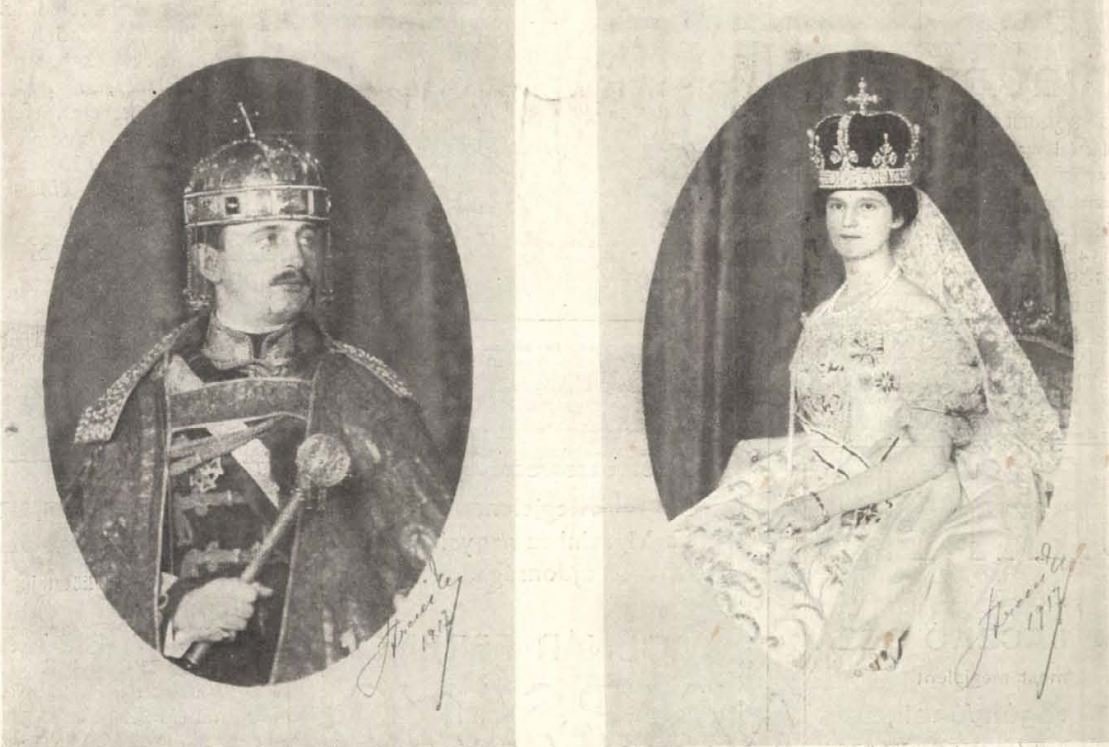


































Hozzászólások
Log in or register to comment!
Login Registration